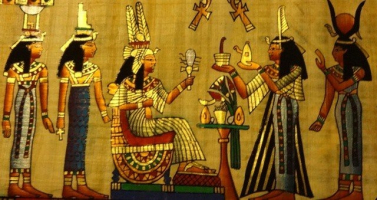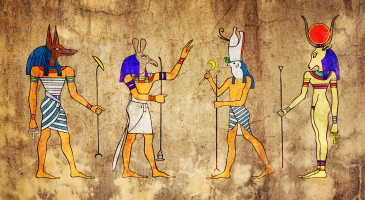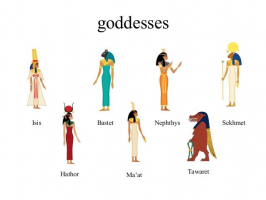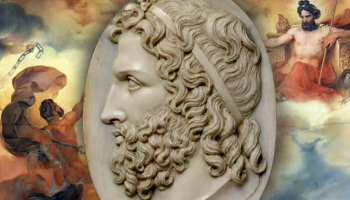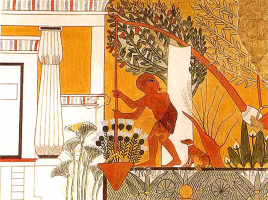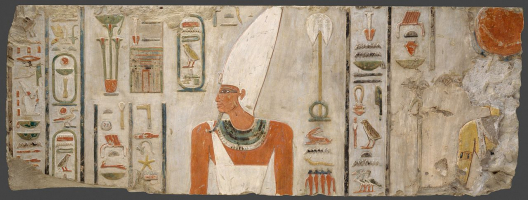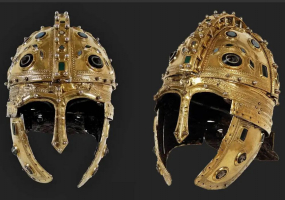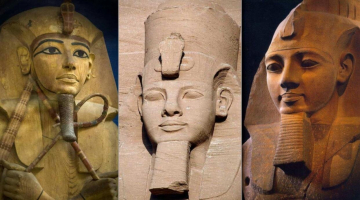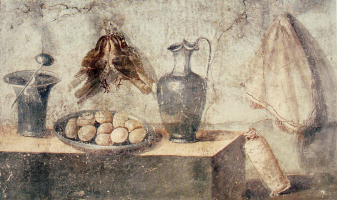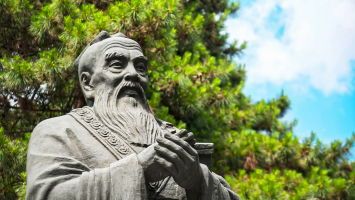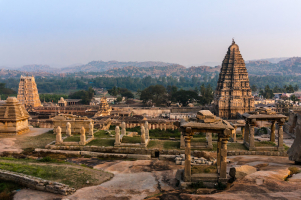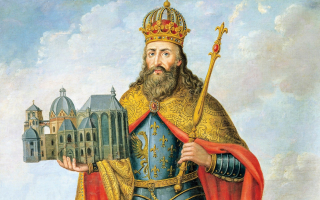Top 10 Most Famous Ancient Egyptian Pharaohs
The Pharaohs of ancient Egypt reigned supreme, they were considered both divine and political figures. The Pharaohs inherited the crown through the royal ... read more...bloodline, where the king, the father, left the throne after death to his eldest son. Countless pharaohs ruled Egypt making it one of the greatest civilizations ever. Their role was not simply emperor, leading to their god-like status. The construction of the Pharaoh's tomb was a major task in Egypt as the pharaohs wanted to be victoriously reborn in the afterlife. Learning about the most famous ancient Egyptian Pharaohs helps future generations to understand and admire the Egyptian civilization more.
-
The most famous ancient Egyptian pharaoh was King Tutankhamun. He ascended the throne at the age of 9 or 10, but his reign lasted only from 1332 BC to 1323 BC. Although the young king introduced many religious reforms, he was not famous for his achievements as a ruler. His fame came from the discovery of his almost intact tomb. Tutankhamun's death is still a matter of controversy as there is no conclusion as to how he died, but his mummy is important for Egyptologists to conduct valuable studies. about the mummification process.
Tutankhamun's tomb was discovered in 1922, gained great fame, and attracted worldwide attention for the extent and value of the Pharaonic civilization, as it is one of the most archaeological discoveries. The greatest of the twentieth century, there is also the mask of Gold "Tutankhamun" which has become one of the most famous symbols of the ancient Egyptian civilization. In the exhibition of the Metropolitan Museum of Art in the US held on November 17, 1976, and April 15, 1979, King Tut's mummy was visited by more than 8 million visitors. In the 1977 edition of the book "Discovering the Tomb of Tutankhamun", Jon Manchip White wrote, "This is the little-known pharaoh when he was alive, but when he died, he was really famous".
- Duration of reign: 1332 – 1323 BC
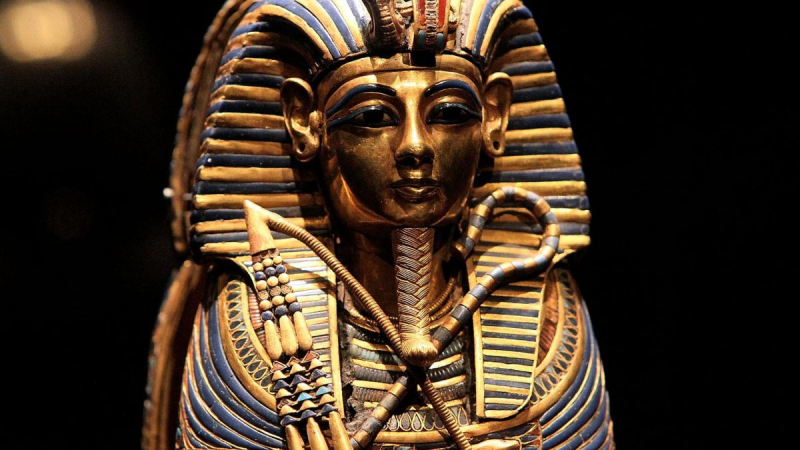
Source: biography.com 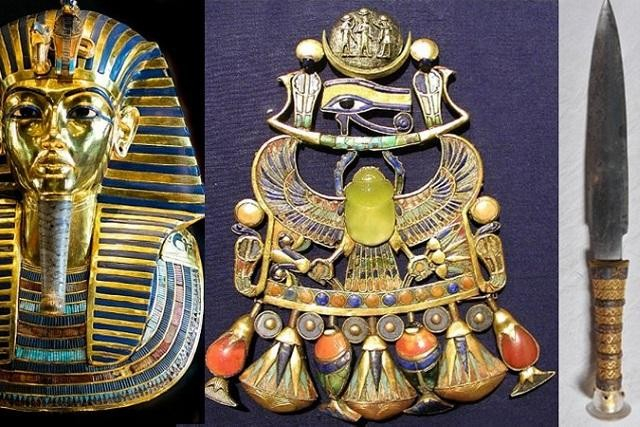
Source: biography.com -
Ramesses II was the third pharaoh of the 19th dynasty and one of the most famous ancient Egyptian Pharaohs. The Egyptians often referred to him as the "Great Ancestor". Ramesses is said to have enjoyed a victorious military career, greatly benefiting the kingdom. He led several military expeditions and conquered many enemies such as the Hittites, the Syrians, and the Nubians. It is believed that no pharaoh has ever surpassed his architectural achievements. He built a large number of monuments spread throughout Egypt that are now a proud part of Egyptian heritage.
Ramesses II's unusual contributions continued after his death when his remains were sent to archaeological authorities in France for restoration. Egyptian officials had to issue passports for the dead pharaoh's body to ensure a legal and safe return. The right documents were prepared along with a passport stating "King (deceased)" as his occupation. The mummy was received at the airport with all military honors due by a king. Ramesses II, the great king of kings and creator of the huge temples at Abu Simbel, was married three times and maintained a harem of more than 200 women, giving birth to 100 sons and 60 daughters.
- Duration of reign: 1279 BC – 1213 BC
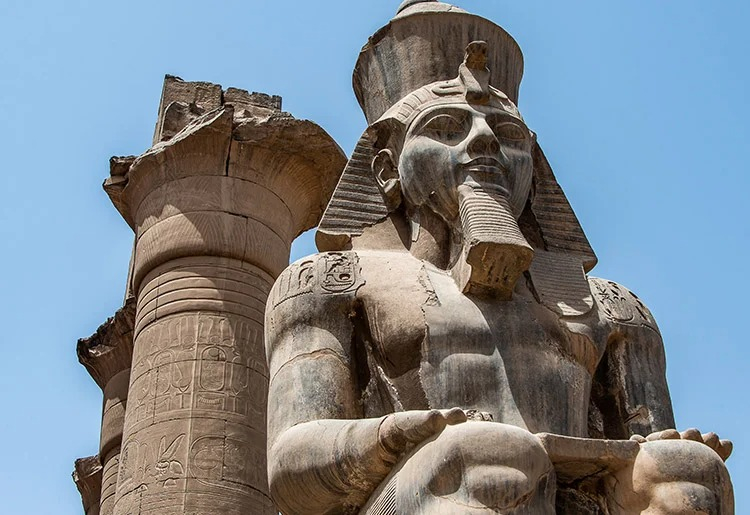
Source: historyhit.com 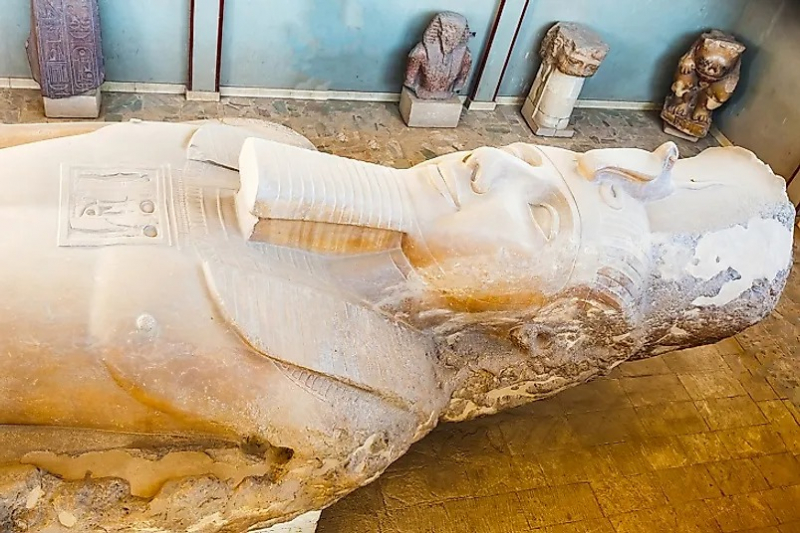
Source: historyhit.com -
The founder of the Old Kingdom, Djoser, was a pharaoh of the Ninth Dynasty, who cannot fail to be mentioned in the list of the most famous ancient Egyptian Pharaohs. The pyramid was created to protect the tomb of Pharaoh Djoser and it was created by stacking huge blocks of limestone in a mastaba style. The stones have inscriptions engraved on them and the building is a great example of an architectural form that is intelligent but does not lose its stability despite its height. The structure was completed after Djoser's death by his official, Imhotep.
Specifics regarding Djoser are limited, but many of his archaeological works tell his story. In a series of successful military campaigns, he secured the borders of Egypt for the first time. He then proceeded to capture neighboring territories, conquering parts of Libya and the Sinai Peninsula. Legend has it that he saved Egypt from a seven-year famine by rebuilding the Temple of Khnum, the god of the source of the Nile, on Elephantine Island. The legend is recorded on the Famine Stele, built hundreds of years later during the Ptolemaic Dynasty. The growth of this legend, even during times of great difficulty, speaks to Djoser's popularity as Pharaoh. As the land enjoyed peace and prosperity, Djoser turned his attention to building projects.
- Duration of reign: 2686 BC – 2649 BC
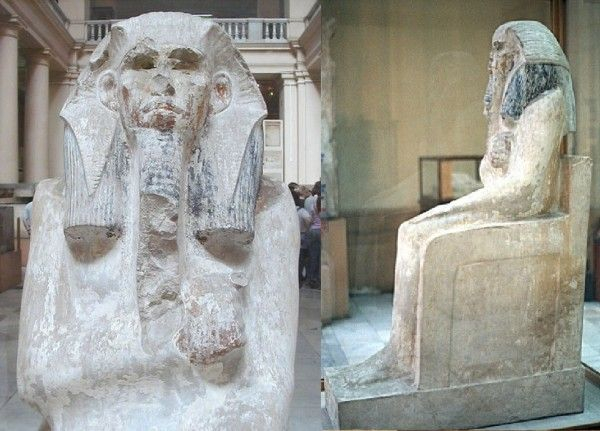
Source: cleopatraegypttours.com 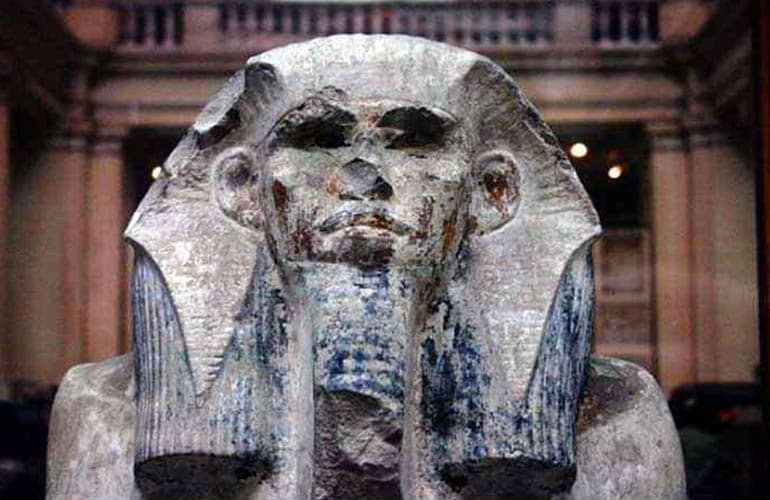
Source: journeytoegypt.com -
As a pharaoh of the Fourth Dynasty, Khufu's greatest legacy is undoubtedly the Great Pyramid of Giza, one of the Seven Wonders of the World. Therefore, he deserves to be one of the most famous ancient Egyptian Pharaohs. This massive Giza structure is a testament to the astonishing sophistication of Egyptian architecture and, notably, remained the tallest man-made structure in the world for 4,000 years. It was conceived by Khufu as a stairway to heaven and the means of its construction remains a mystery to this day.
Also known as Cheops (Greek translation), Khufu was the second pharaoh of the Fourth Dynasty during the first half of the Old Kingdom period. Famous for the construction of the Great Pyramid of Giza, also known as the 'Pyramid of Khufu'; It is considered the oldest of the seven wonders of the world that is still alive and well. The pyramid is the tallest man-made structure with a height of 146.7 meters (481 ft) for the most beautiful period in 4000 years and is estimated to weigh about 6 million tons. Khufu reigned about a century after Djoser, and he took the innovations of his predecessor to the next level. The historical record is divided regarding Khufu. Egyptian records describe him as a rather benevolent ruler, and the popularity of his honorary cult also suggests that he was not a violent tyrant.
- Duration of reign: 2589 BC ‒ 2566 BC
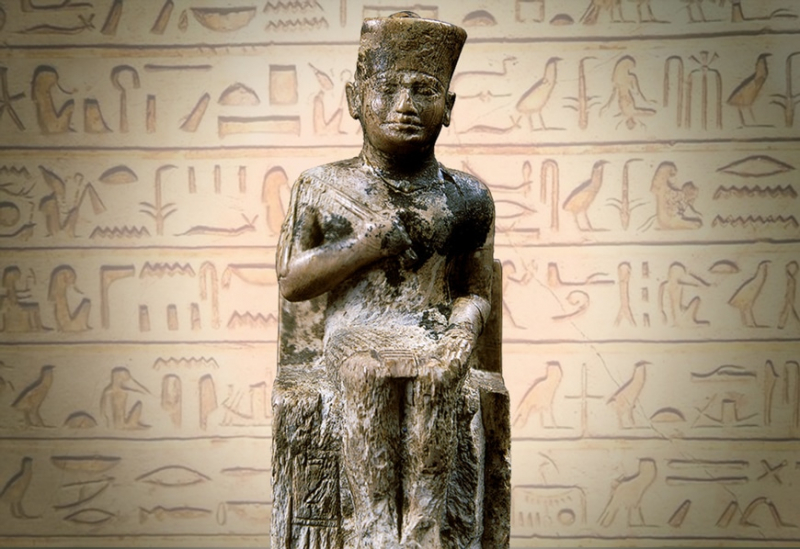
Source: phdeed.com 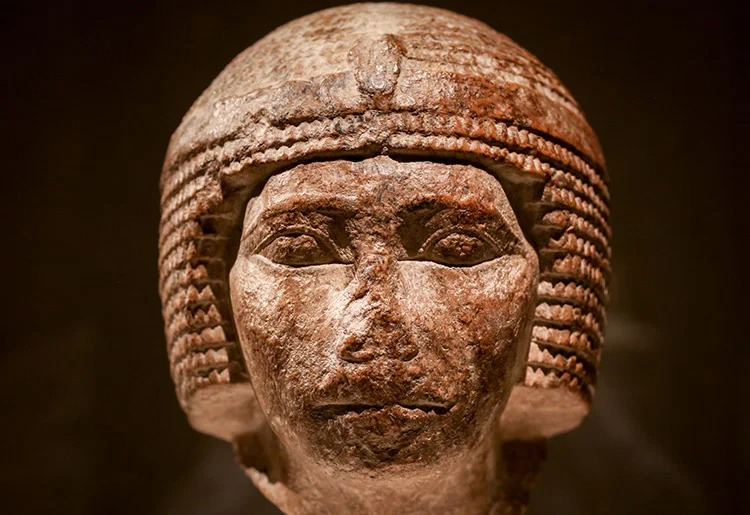
Source: historicaleve.com -
Hatshepsut carries the title of the most successful female pharaoh to the throne of Egypt, the most famous ancient Egyptian pharaoh. As the fifth ruler of the 18th dynasty of Egypt, Hatshepsut reigned from 1478 BC to 1458 BC. As the wife, daughter, and sister of a king, Hatshepsut was not only of royal blood but also inherited the art of ruling from her royal family. Although the status of women in ancient Egypt was very high, female pharaohs were rare. After her husband's death, Hatshepsut ascended the throne and reigned for more than 21 years. She accomplished so much more than many other pharaohs could have done during their reigns. From initiating countless construction projects to establishing trade routes with foreign countries, everything went smoothly, and the people enjoyed peace under her government.
Hatshepsut cemented her legitimacy as pharaoh by claiming that her mother was visited by the god Amon-Ra while pregnant with her, thus signaling her divinity. She held the role of the pharaoh and proved a skilled ruler, re-establishing important trade routes and overseeing long periods of peace. She personally led the army on at least one occasion, and she sent a large trading expedition to the land of Punt. Hatshepsut is renowned as one of the most accomplished builders in Egyptian history.
- Duration of reign: 1478 BC – 1458 BC
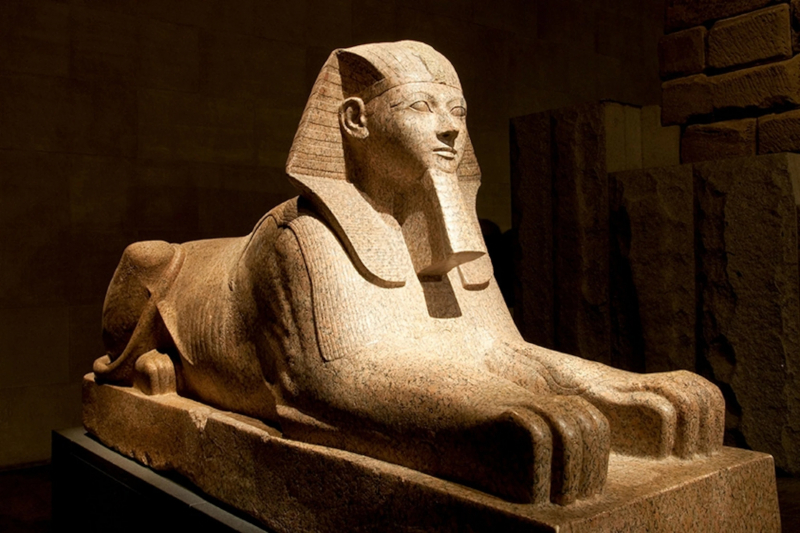
Source: thecollector.com 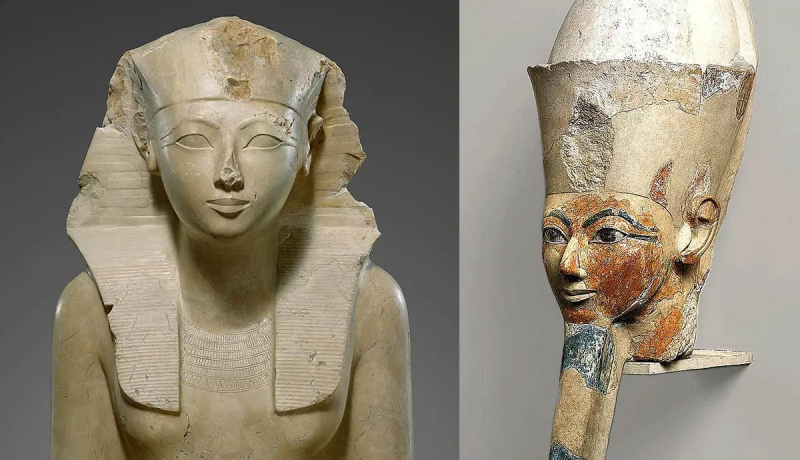
Source: egypttoursportal.com -
Akhenaten, also known as Amenhotep IV, was an ancient pharaoh of the 18th Dynasty, he is the most famous ancient Egyptian Pharaoh with much controversy. His reign was unpopular due to the unpopular reforms that took place. The Egyptians were accustomed to worshiping a large number of gods, but Akhenaten attempted to change this religious tradition to monotheism, or the worship of only one god. This god is Aten, a type of sun god related to Ra. The people and future pharaohs were so saddened by this change that after Akhenaten's death, they destroyed his statues and reverted to their old ways of worship. He was removed from the list of kings and hardly a trace of him was found until his remains were discovered at Akhetaten.
The pharaoh never intended to be a ruler, Akhenaten was one of the New Kingdom's most controversial rulers who brought Egypt to the brink of bankruptcy through religious ideology and policy. mine. Originally named Amenhotep IV after his brother's sudden death, this young pharaoh challenged the religious beliefs of the time and unleashed a cultural, political, and religious revolution after He and his wife Queen Nefertiti began a course to redefine the way ordinary Egyptians worshiped.
- Duration of reign: 1351 BC – 1334 BC
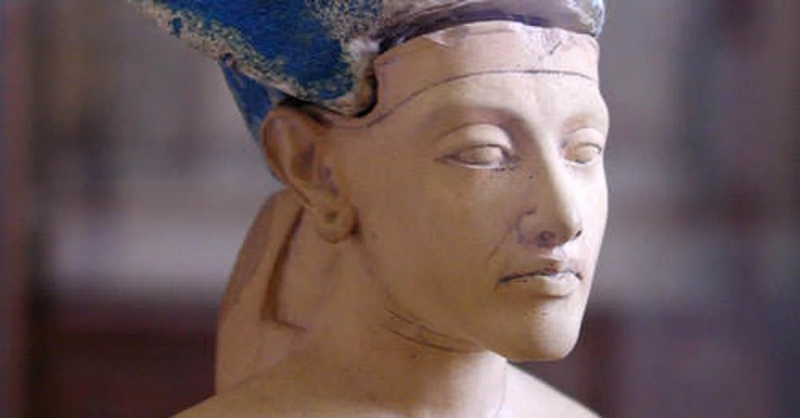
Source: grunge.com 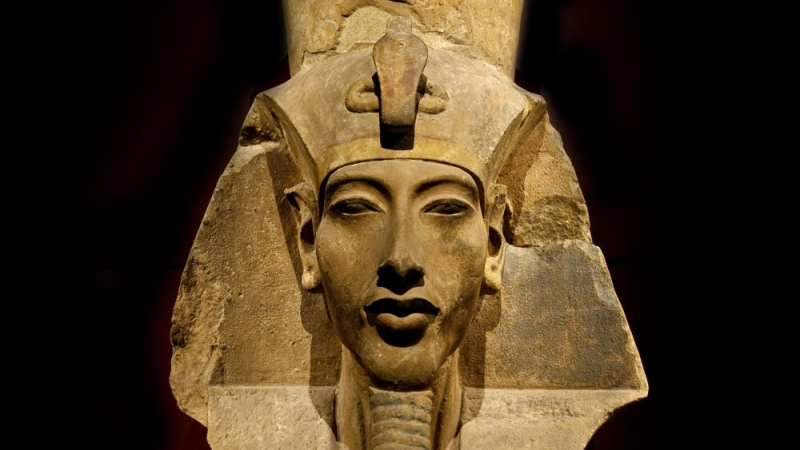
Source: worldhistory.org -
Cleopatra VII is not a native Egyptian but the daughter of the Macedonian general Ptolemy I Soter. Her reign lasted from 51 BC to 30 BC, during which she proved herself to be a prominent leader, and one of the most famous ancient Egyptian Pharaohs. The Kingdom of Egypt prospered during her reign as various reforms were introduced to improve the Egyptian economy. Her foreign connections, both personal and political, proved to be of great value to the kingdom and led to much prosperous foreign trade.
Dominating Egypt was never an easy task for her as her ascension to the throne was challenged by her own brother. An intelligent and talented emperor, but at the age of 39, she committed suicide, although how has yet to be proven. Egypt's last ruling pharaoh had a great influence on literature and theater, with many plays, documentaries, television series, and movies being made about her life. After Cleopatra VII's death, the Egyptian Empire came to an end. Cleopatra VII was an astute, politically savvy ruler who succeeded in bringing peace and relative prosperity to an ailing empire.
- Duration of reign: 51 BC – 30 BC
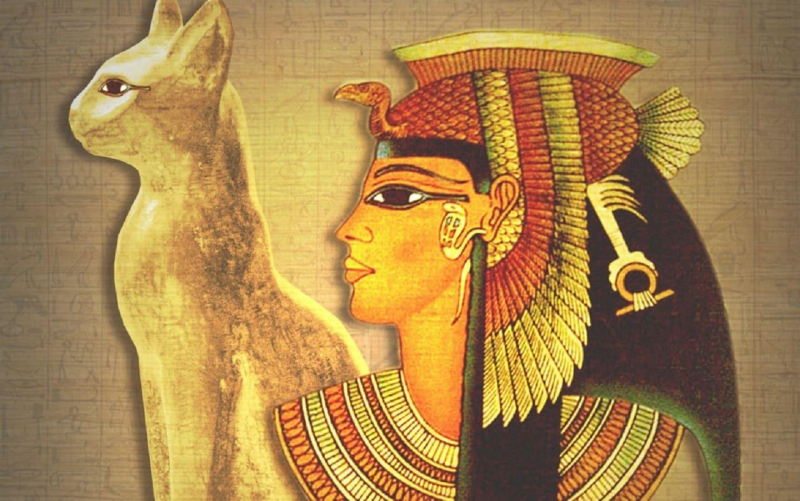
Source: thoughtco.com 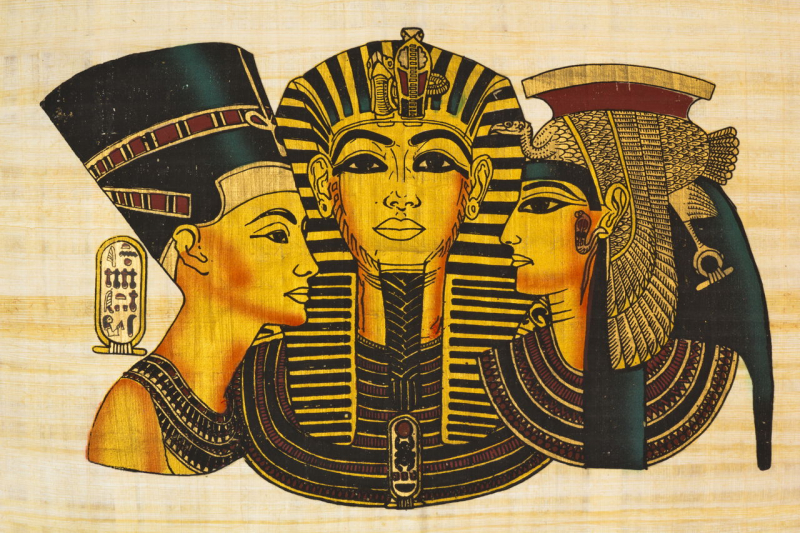
Source: thoughtco.com -
Xerxes I, commonly known as Xerxes the Great, was the fifth king of the Achaemenid dynasty of Persia. He is one of the most famous ancient Egyptian Pharaohs - famous in history for his attempt to invade Greece at the Battle of Thermopylae. Finally that year, he was defeated at the Battle of Salamis, forcing him to flee his kingdom. He is known as a Persian ruler and a pharaoh because when he ruled Egypt, it was also part of the Persian Empire. Xerxes I is not actively depicted in history books because most historical texts were written by the Greeks, who saw him as a symbol of autocracy.
The Achaemenid kings of Persia were recognized as pharaohs and so Xerxes I, as he was known, earned a spot on the list thanks to his famous. Xerxes I is often portrayed as a tyrant and it is likely that, as a Persian king, his disregard for local traditions did not endear him to the Egyptians. He was actually an absentee pharaoh, and his failed attempts at invading Greece have ensured that his portrayal is not appreciated by Greek historians.
- Duration of reign: 486 BC – 465 BC
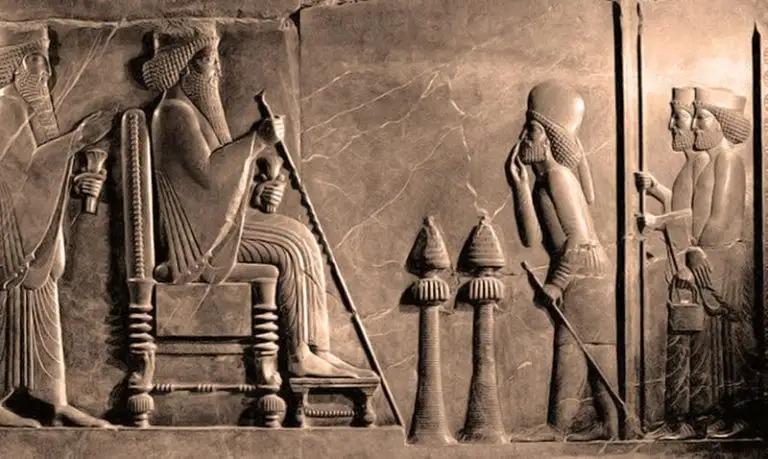
Source: ancient-origins.net 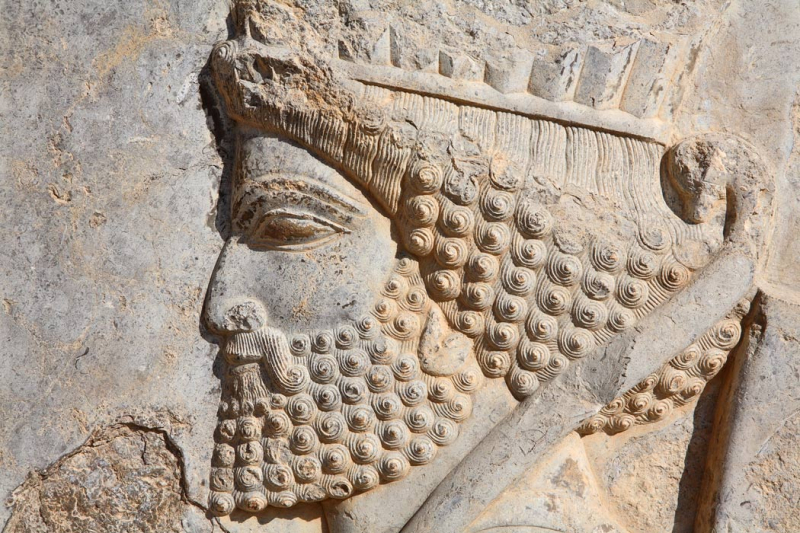
Source: thecollector.com -
Thutmose III was the heir to the 18th dynasty of Egypt and the stepson of the previous pharaoh Hatshepsut. As King Thutmose II's only son, he was supposed to take over the throne upon his death, but he was only two years old so his stepmother Hatshepsut took the throne while he became co-regent of King Thutmose II. His reign lasted 54 years and he died at the age of 56, but his contribution to Egyptian civilization is still considered one of the greatest. Becoming the most famous ancient Egyptian Pharaoh with the name "Napoléon of Egypt", Thutmose has an extensive list of achievements and military achievements. The expansion of the kingdom of Egypt under his reign was remarkable. Thutmose is also considered a great warrior who fought many enemies to protect Egypt and its people. He contributed greatly to the construction of various sites and his most famous contribution is the temple at Karnak. One of the towers from this temple was reconstructed as Theodosius' Obelisk in Istanbul, Turkey. Thutmose's mummy was discovered in the Valley of the Kings, where he was buried along with other pharaohs of the same dynasty.
Thutmose III devoted himself to military training while his stepmother, the pharaoh, assumed the main role of ruler only when Hatshepsut died in 1458. The pharaoh's military training paid off, and he gained fame as a military genius; indeed, Egyptologists sometimes refer to him as the Napoleon of Egypt. Thutmose III never lost a battle and his military exploits earned him the respect of his subjects and, for many, his status as the greatest pharaoh ever.
- Duration of reign: 1458 BC – 1425 BC
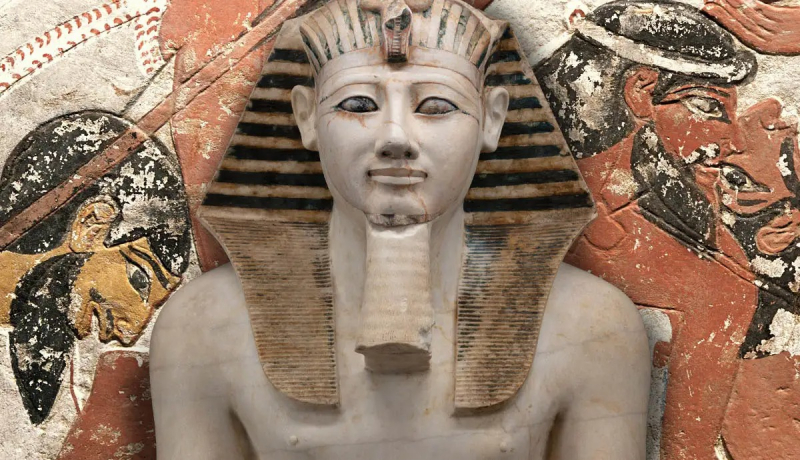
Source: thoughtco.com 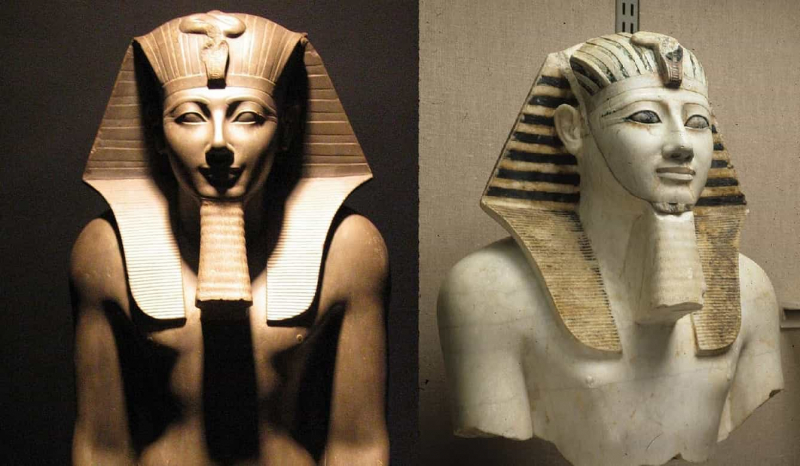
Source: thecollector.com -
Amenhotep's rule is remembered as one of the glory and prosperity of art. Amenhotep III was the ninth pharaoh of the 18th dynasty whose reign lasted from 1391 BC to 1353 BC. He deserves to be the most famous ancient Egyptian Pharaoh for having had a great impact on the Egyptian economy that flourished during his reign thanks to the healthy trade relationships at this time. He contributed a lot to the field of art by building many monuments, statues, and stone scales that are still intact to this day. Many texts were found engraved on these fragments during excavations describing a wide range of historical events. He is considered the pharaoh with the largest number of statues of himself.
During Amenhotep III's 38-year reign, he primarily led a peaceful and prosperous Egypt. Indeed, Amenhotep III's achievements as pharaoh were more cultural and diplomatic than military; Few ancient Egyptian pharaohs can match his architectural and artistic legacy. Egypt's wealth and prosperity associated with trade and gold mining in Nubia, allowed Amenhotep to begin extensive construction projects centered in the ancient city of Thebes, ensuring that he would be remembered. to eternal life. Huge buildings, temples, and towering statues of royal figures and gods signify his reign. Like the pharaohs before him, Amenhotep also made impressive contributions to the sacred religious temple of Karnak, the vast temple dedicated to the god Amun, the creator god. Amenhotep III's reign saw Egypt prosper with great wealth, which encouraged a culture of leisure relaxation unlike before.
- Duration of reign: 1388 BC – 1351 BC
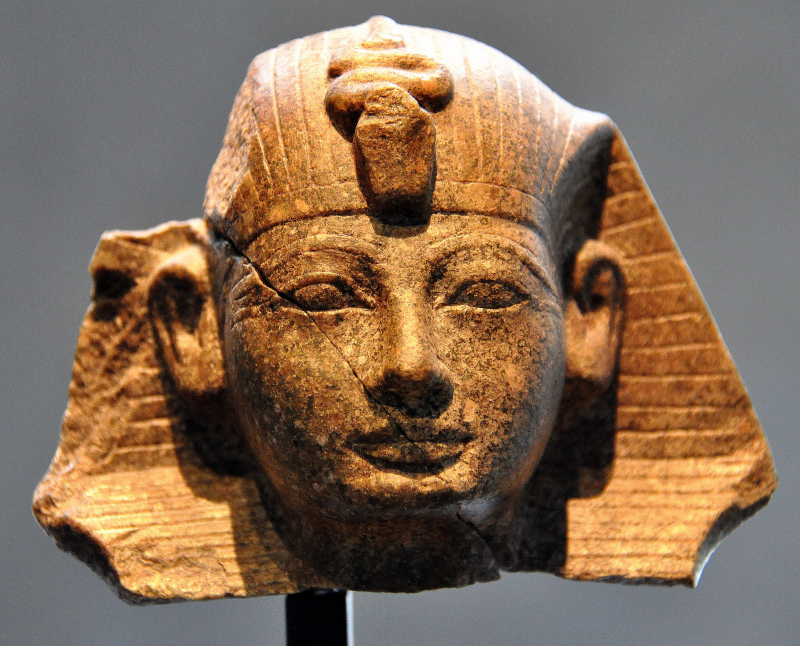
Source: worldhistory.org 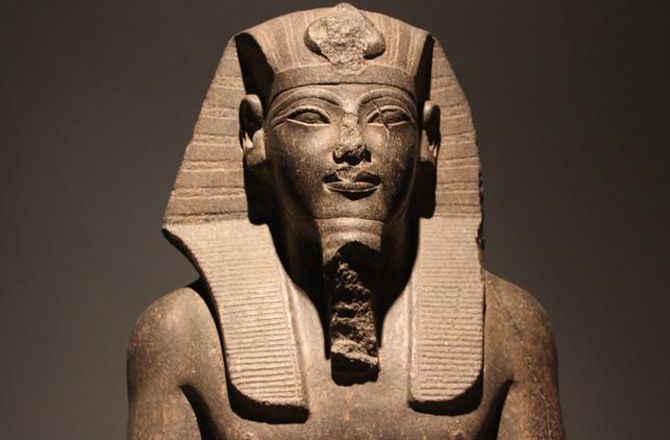
Source: worldhistory.org












